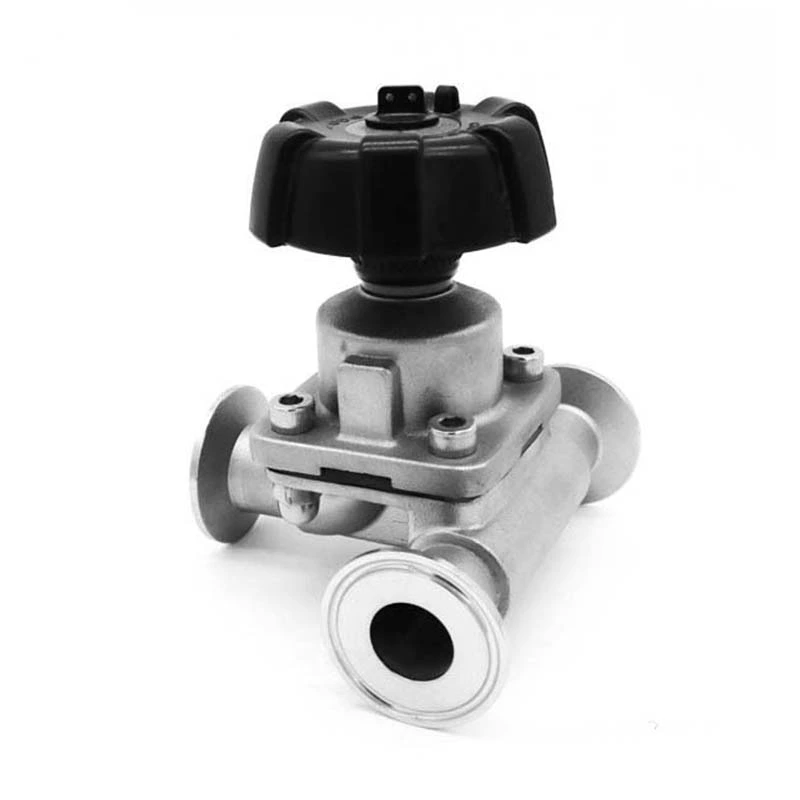Sanitary Diaphragm Valves Are Especially Suitable For Solid And Easily Contaminated Inert Media
Sanitary Diaphragm Valve Especially suitable for solid and easily contaminated inert media
The sanitary diaphragm valve is a flexible diaphragm or a combined diaphragm installed in the valve body and the valve cover, and its closing part is a compression device connected to the diaphragm. The valve seat can be a weir shape or a pipe wall of a straight-through flow channel. The advantage of the sanitary diaphragm valve is that its operating mechanism is separated from the medium passage, which not only ensures the purity of the working medium, but also prevents the possibility of the medium in the pipeline impacting the working parts of the operating mechanism.
The main advantage of the sanitary diaphragm valve is that its operating mechanism is separated from the medium passage, which not only ensures the purity of the working medium, but also prevents the possibility of the medium in the pipeline impacting the working parts of the operating mechanism. In addition, no separate seal of any form is required at the valve stem unless it is used as a safety facility in controlling harmful media.
In the sanitary diaphragm valve, since the working medium contacts only the diaphragm and the valve body, both of which can be made of a variety of different materials, the valve can ideally control a variety of working media. The sanitary diaphragm valve is particularly suitable for media with chemical corrosiveness or suspended particles. The working temperature of the diaphragm valve is usually limited by the materials used for the diaphragm and the valve body lining, and its working temperature range is about -50 to 175°C.
The sanitary diaphragm valve is not only simple in structure, small in size, light in weight, low in material consumption, small in installation size, but also has a small driving torque, is easy and quick to operate, and can also have good flow regulation function and closing sealing characteristics at the same time. The stainless steel sanitary diaphragm valve has a small flow resistance when it is fully opened. When it is opened between about 15° and 70°, it can also perform sensitive flow control. Therefore, butterfly valves are widely used in the field of large-caliber regulation; The movement of the valve plate of the stainless steel sanitary diaphragm valve is wiping, so the welded butterfly valve can be used for media with suspended fixed particles, and can also be used for powdered and granular media according to the strength of the seal.
The strength test of the sanitary diaphragm valve introduces the medium from either end, opens the valve disc, and closes the other end. After the test pressure rises to the specified value, it is qualified to see that there is no leakage in the valve body and valve cover. Then reduce the pressure to the sealing test pressure, close the valve disc, open the other end for inspection, and pass if there is no leakage. Sanitary diaphragm valves are used in places with high hygiene requirements such as pharmaceuticals, biology, purified water treatment, etc. The diaphragm valve itself is particularly suitable for ultra-pure media or heavily polluted, very viscous liquids, gases, corrosive or inert media due to its structural design. When combined with control equipment, diaphragm valves can replace other traditional control systems, especially for solid and easily contaminated inert media, and the diaphragm can be replaced after long-term use.
